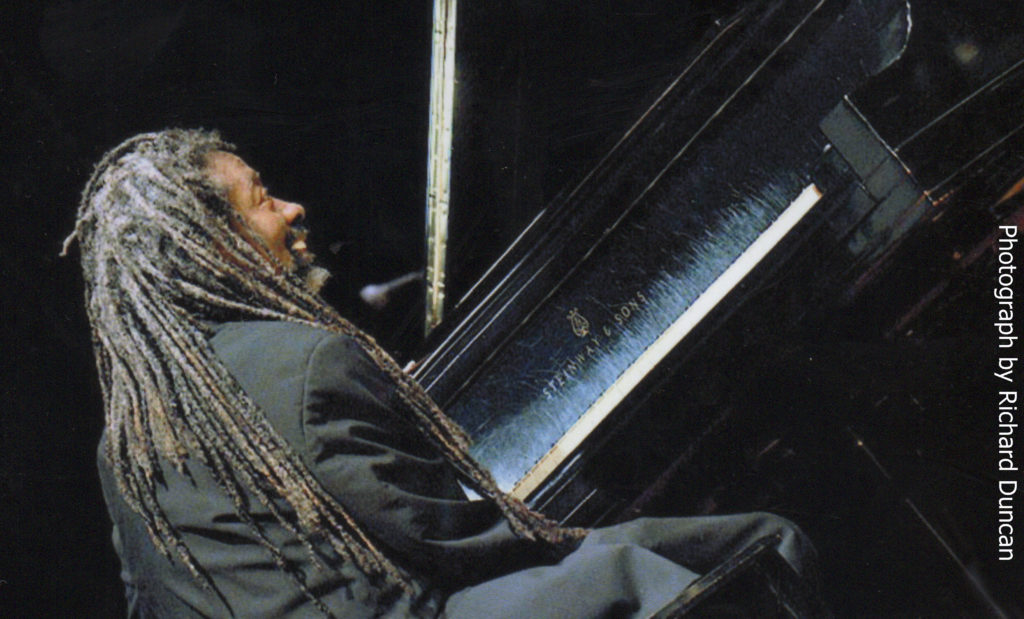
ROBERT IRVING III-Biography
The Glee Club at Beethoven Elementary School provided young Robert Irving III with his first musical experience, singing the show tune, “Put On A Happy Face.” in addition to the school song from Beethoven’s 9th Symphony. He’d later march in the 1965 Bud Billiken Day Parade playing the Bugle with the Robert Taylor Park District Drum & Bugle Corps. The next year at DuSable Upper-Grade center (6th -7th grades), Irving mastered a range of brass instruments starting with mellophone, cornet, baritone horn and valve trombone. Located on the same campus as the renowned DuSable High School, the Upper Grade Center had served as the training ground for early childhood music education for band-teacher Captain Walter Dyett, whose students comprised a Who’s Who of Jazz royalty, including Johnny Griffin, Gene Amons, Dinah Washington, Johnny Hartman, Nat King Cole, Eddie Harris and Oscar Brashear. His family moved further south to Chicago’s Chatham neighborhood where Irving attended Hirsch High School, playing slide trombone and sousaphone while studying piano theory with George Hunter. He also took private guitar lessons with the legendary Gerald Sims. Impressed by Irving’s rapid adaptation to piano, his band teacher George Hunter invited him to sit in (as jazz organist) on the Moonlighter’s Big Band gigs that featured, member’s of the Ramsey Lewis trio along with bassist/trombonist Louis Satterfield and saxophonist, Don Myrick who would both go on to become an integral part of Earth Wind & Fire.
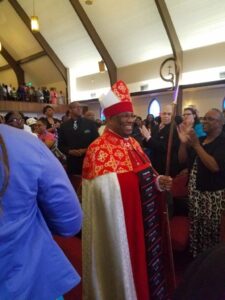
In 1969 after the untimely death of his mother, four of Irving’s six siblings moved to North Carolina with his maternal grandmother. There he also became acquainted with and mentored by older cousins who were successful gospel musicians and minsters. Notably, one such cousin, Bishop Harry Cohen is currently the Prelate of over 500 churches in the US, Caribbean and Nigeria and (one of four Bishops in the Irving/Cohen paternal and maternal families). With a strong jazz background and experience on organ, a prominent church hired 16-year old Irving as organist and he composed a song that became his first record production as a 45rpm vinyl release at the age of 17. He is credited with changing the regional southern gospel music culture with the use of advanced jazz harmonization. After High School in North Carolina. Irving toured over the summer with a popular evangelist, playing organ. Years later he would learn that jazz pianist/composer Thelonious Sphere Monk (having been born and raised in the neighboring North Carolina town of High Point), had, likewise, first toured with an evangelist at a young age. Irving soon decided to pursue college studies and in 1972 and entered a Business Administration Associate’s degree program at Rock Tech. Irving recalls, “I wanted to study business because I knew I would always do music and wanted to be informed as a music business entrepreneur.” After this two-year intensive program he subsequently worked in the insurance industry in North Carolina.
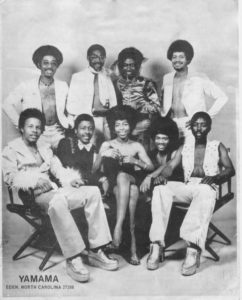
He continued private studies in big band arranging and soon formed what became a popular Top-40/Fusion band that covered the music of Earth Wind & Fire, Ramsey Lewis and The Jazz Crusaders, etc. The group rehearsed in a small cinder-block building (owned by Irving’s cousin, Harold Cohen) converting it into nice studio, which they called the “Factory”. Irving explains, “The group’s chosen name became Mass Production (alluding to the music produced in the ‘factory’ and to my studies of Economics in the Business Admin program). Harold became the band’s manager and financier. During a performance at a small club in neighboring Virginia, Harold spoke with the manager of another band that attended our show. His group subsequently stole our name and eventually had a few hit records. Irving states, “We changed our name to Yamama (basically as a response to them I.E. ‘Your Mama’).” One of the rival bands in North Carolina, Funk House, were actual cousins and back-up band for Betty Davis the former wife of Miles at that time. Ironically, other musicians from North Carolina actual led to Irving’s eventual meeting with Davis.
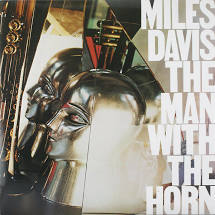
After returning to Chicago in 1978, Irving connected with a number of young musicians, including drummer, Vince Wilburn Jr., the nephew of Miles Davis. Today, Robert Irving III completes a distinguished lineage of post-bop pianists/composers who collaborated with the legendary Miles Davis. At age 26, Irving’s composition “Space” initiated the 1981 comeback of Miles Davis and their prolific nine-year collaboration beginning with the album, “The Man With The Horn” of which Irving was also co-writer of the title track and the composition “Shout,” garnering his first Grammy Award nomination. Irving’s memoir “Harmonic Possibilities” and the Sound of Freedom details the details of that first year of collaboration with Davis that culminated with the release of, what is known as, Davis’ comeback album after eight-years of silence. The title of Irving’s memoir is taken from the first day Davis shared his complex harmonic concepts with Irving at the piano.
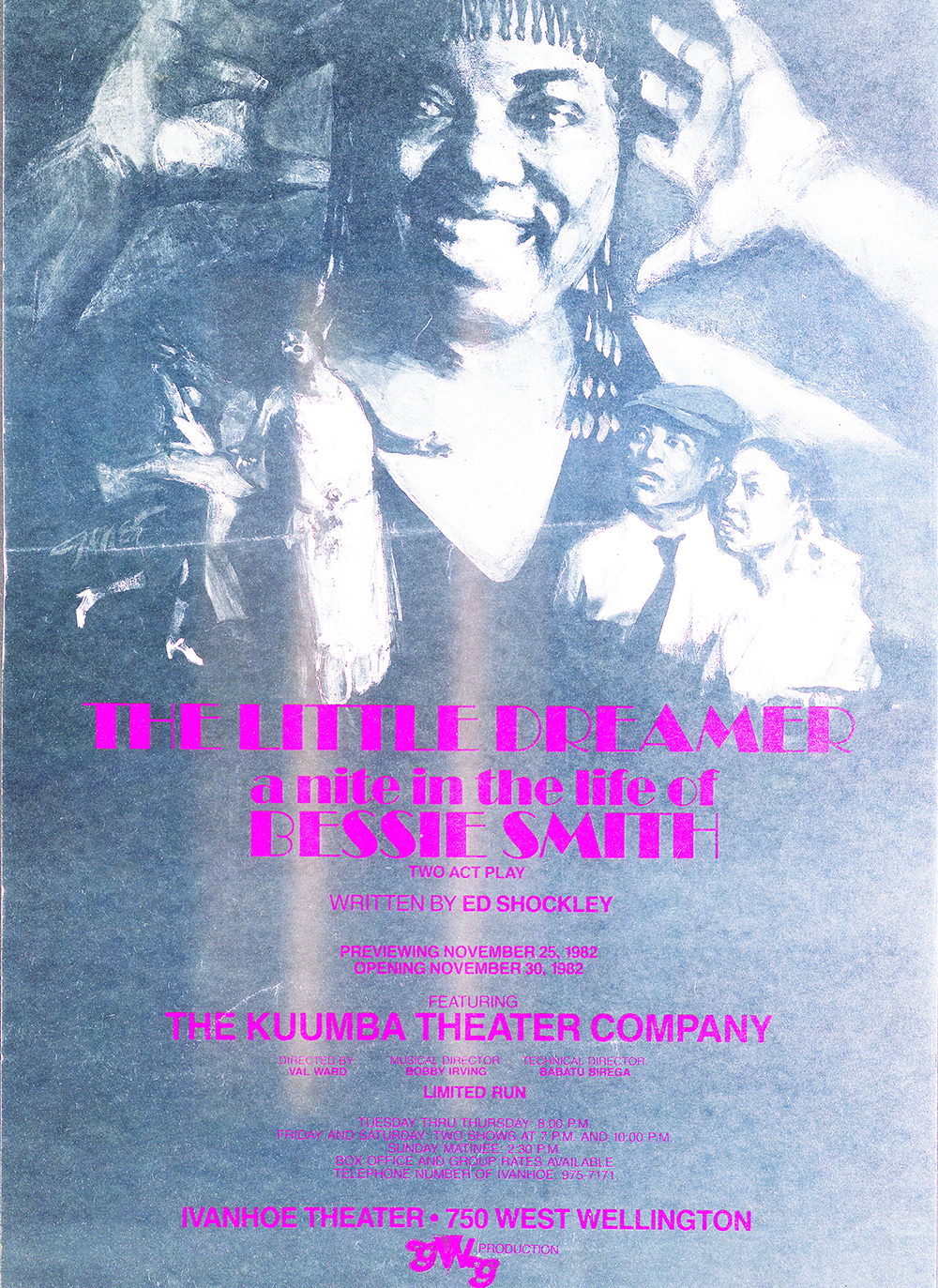
In the interim, during 1982 Irving became musical director/arranger and pianist for the six-month run of the Kuumba Theater production of “The Little Dreamer… a Nite in the Life of Bessie Smith,” which starred the legendary folk singer, Odetta, then later, renowned vocalist Jean DuShon and finally blues diva, Babara LaShoure– each in the led role. Everett Greene (Count Basie Orchestra) carried the male lead role. The band included Ernest Dawkins on clarinet and the legendary Kansas Fields on drums. Irving studied boggie-woggie piano styling with the legendary Little Brother Montgomery, who had composed music for the show. Irving arranged music for a small ensemble consisting of piano, tuba (Aaron Dodd), clarinet and drums.

After the successful six-month run of the Bessie Smith show, Irving received an invitation to create arrangements for the pop group Sister Sledge as they embarked on a jazz club tour. This being prior to the accessibility of notation software for computers; Irving created the scores by hand a hired a copyist to transcribe the individual parts for each instrument. This would be the first time that he’d professionally utilize the training received in studies with Wesly Bulla at the University of North Carolina Greensboro. Irving played piano at the rehearsals. His arrangements were well received and it became a natural progression for him to be enthusiastically invited to perform on the tour as musical director.

During 1981 through 1984 Irving also worked as a composer/arranger and keyboardist on three Ramsey Lewis albums starting with Three Piece Suite (Columbia, 1981), Chance Encounter (Columbia, 1982) and Live At The Savoy (Columbia, 1984). Considering that Irving’s North Carolina band performed the music of Lewis, it is quite serendipitous that he would work so closely with Lewis. While producing the second album with Miles Davis in New York, Irving saw Tom Tom 84 (Earth Wind & Fire arranger) walking down the street. Tom Tom informed him that Ramsey Lewis would be doing a live recording that evening with two of Irving’s songs being featured. The songs were vocal tunes, “You Never Know” and “Callin Fallin”, which Irving co-wrote with Smokey Bates. Tom Tom invited Irving to play Fender-Rhodes electric piano at the historic Savoy Theater performance featuring Grover Washington Jr. on saxophone. Five years later, Irving would produce recording sessions with Washington.
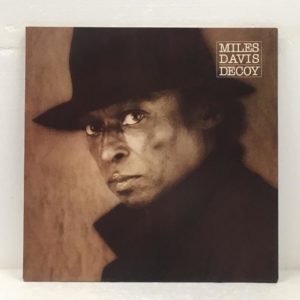
In early 1983 Davis invited Irving to, once again, return to work with him as composer, arranger and co-producer. Irving produced the last two Columbia Record albums for Davis, “Decoy”, which won the Downbeat Readers Poll for Best Jazz Album and “You’re Under Arrest” that garnered Grammy Award nominations for the album and the singles “Human Nature and Time After Time.” Decoy was a pivotal album for Davis and for jazz, as it was the first jazz album to utilize live sampled drums played from a drum machine in tandem with live drums creating poly-rhythms layers. For the first time Miles opted not attend the rehearsals or the initial recording sessions, delegating supervision to Irving who would bring cassette tapes back for Davis to review each evening over dinner (from a NYC Chinese Cuban restaurant they both loved). After listening, Davis requested revisions in the execution and articulation of the music, which Irving would convey on the following session day. Davis later came into the studio to overdub. Irving confirms, “Miles only did one take on title track, Decoy and all the other music. In this way, it felt as authentic as a live recording.” The all-star band included Al Foster on drums, John Scofield on guitar, Branford Marsalis on tenor sax and it was the first recording session for Irving’s Chicago friend, bassist, Darryl Jones (who states that “Decoy put me on the map with that driving bass line”). As we know, Jones went on to play with Sting, Peter Gabriel, Madonna and the Rolling Stones. In his memoir, Irving recalls that Outer Limits had been the original title of this composition, which Miles renamed, Decoy. Irving’s writing had been inspired by his conversations with Dr. Robert Moon the physicist who had worked on the Manhattan Project, to develop the formulae for nuclear fusion. Moon, a neighbor of Irving’s, then, future father-in, Dr. Morris Tynes, often spoke to Irving about the “ever expanding universe”; thus the concept of outer limits of the Omniverse influenced Irving’s compositional approach. The power of the Decoy sessions led to Davis’ invitation for Irving to join the band and later to become his music director and arranger. Irving’s first European tour with the Miles Davis band started at the Warsaw Jazz Jamboree behind the Iron Curtain at the height of the Cold War with a concert on Irving’s birthday (October 27, 1983). Davis began to speak to Irving more and more about symphonic music directions, urging him to listen to the works of Arnold Schönberg, Igor Stravinsky and Maurice Ravel in particular. Davis consequentially asked Sketches of Spain arranger, Gil Evans to mentor Irving in orchestration and arranging concepts for larger ensemble with the goal of doing an album of pop ballads with strings. During this time Irving regularly performed with the Gil Evans Orchestra in New York. You can learn more about this in the introduction to Irving’s memoir, “Harmonic Possibilities and the Sound of Freedom.”
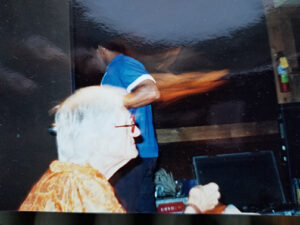
Davis requested that Gil Evans and Robert Irving III work on arrangements of numerous pop ballads. The Miles Davis band actually rehearsed and/or performed some of this music, but no studio recordings were ever made. Davis had become extremely unhappy with the dynamics of his relationship with Columbia Records. In October 1984, Miles received a call from Dr. George Butler at Columbia Records urging him to “call Wynton Marelis to wish him a happy birthday.” Miles, resenting this, slammed the phone down. There had been bad blood between Wynton and Miles. This proved to be Miles’ breaking point and subsequently informed his decision to make his next album the last for the label.” The expedition of this final Columbia recording project became the new mission of Irving as producer. Because of tour scheduling in the Spring, Summer and Fall, little time remained for proper pre-production including conceptualization. composition, arranging, rehearsals, recording and mixing and album. Irving states, “You’re Under Arrest” is actually three albums with the ballads, funk tunes and live tracks revisited. It came together somewhat chaotically, but order does come from chaos.” The resulting project, nevertheless, garnered two Grammy Award Nominations and sold 100,000 units.

Later, Irving extended his musical direction with film scores for an episode of Alfred Hitchcock Presents entitled, “The Prisoners” starring Yaphet Koto and the feature film “Street Smart,” starring Morgan Freeman and Christopher Reeve—with Miles Davis as featured instrumentalist on both.
Irving served as Music Director for the Miles Davis groups from 1983 until he left the band in 1988. That year Irving released his first solo album, Midnight Dream on the Verve/Forecast label. The project featured (right to left on the photo below) John Scofield, Darryl Jones, Buddy Williams, André Lassalle and vocalist, Phil Perry. The album sold over 30,000 units (unheard of today’s jazz record industry). Irving’s composition Time Won’t Tell (All Time Is Now) sung by legendary vocalist, Phil Perry, received daily airplay with commentary by then popular New York DJ, Frankie Crocker on WBLS. Irving’s lyric carried a strong message about the ecology and voiced concerns about the Cold War that would persist just another two-years. Irving drew inspiration from his first trip behind the iron curtain and a subsequent visit to East German through Check-Point Charlie behind the Berlin Wall.
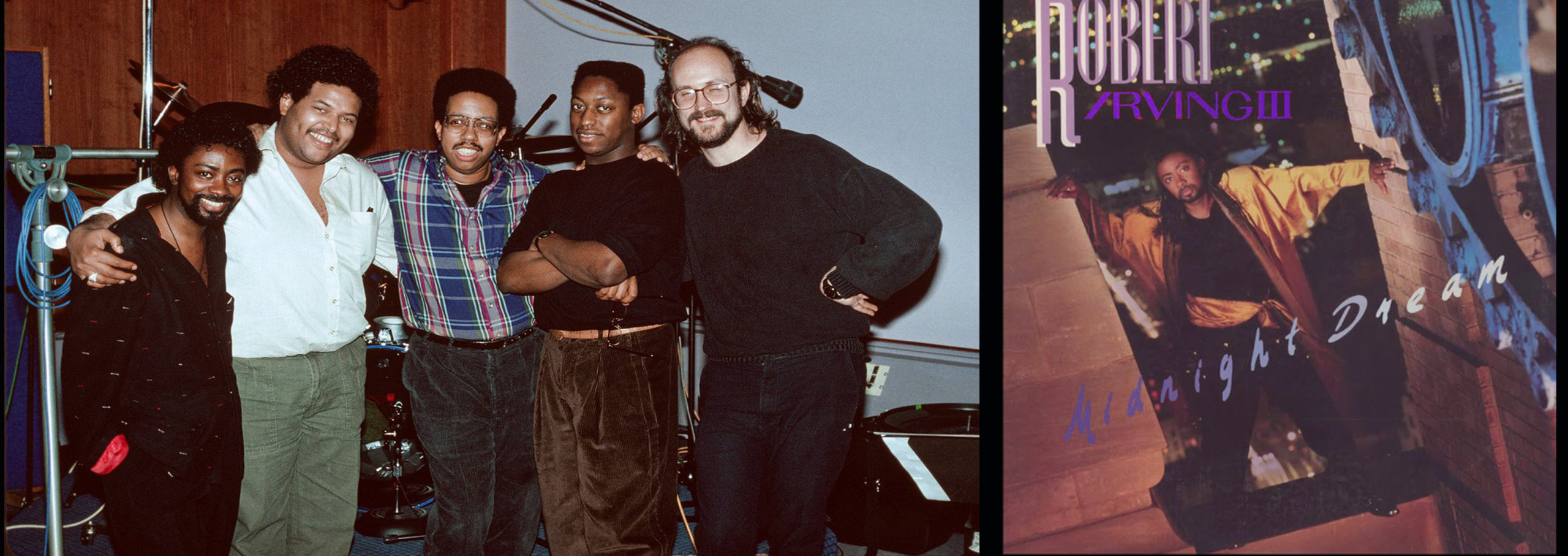
Irving co-founded Expansion Records just after this enjoying much commercial success. From this time through the new millennium Irving would go on to produce five Grammy Award nominated projects while working closely with Terri Lyne Carrington, Carlos Santana, Wayne Shorter, Patrice Rushen, Diane Reeves, Pharaoh Sanders, John Scofield, Grover Washington Jr, Nancy Wilson, Branford Marsalis, Roy Ayers, R. Kelly, George Duke. He also served as a Musical Director for Donald Byrd. During this period he recorded and toured extensively in Europe, Africa and Asia with David Murray and Wallace Roney (together at times with Gerri Allen) and Antoine Roney, Kahil El Zabar, Ari Brown, Nona Hendrix and many others.
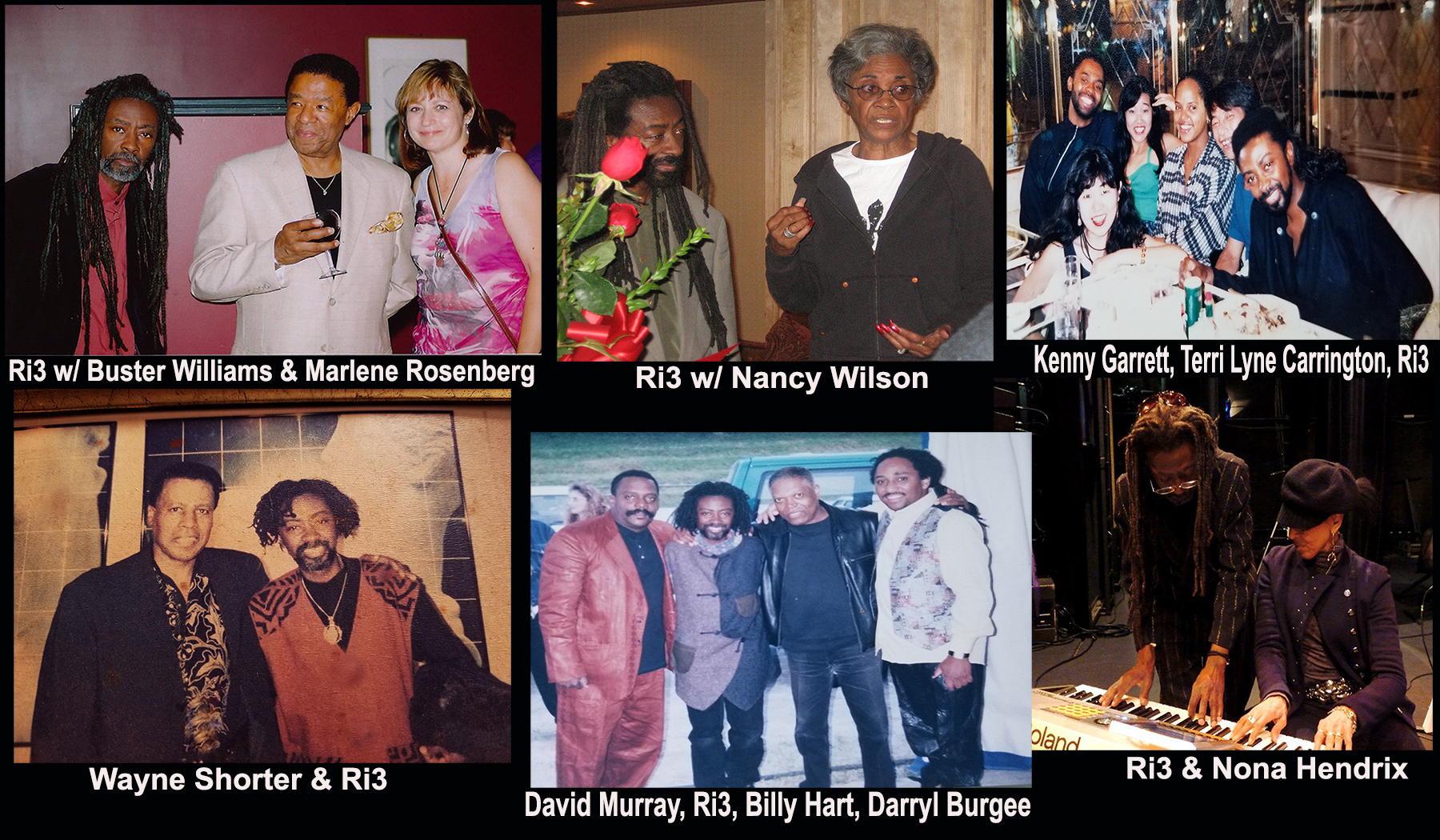
Irving also led bands that featured Wallace Roney, David Murray, Eddie Henderson, Lenny White, Regina Carter, Gary Bartz, Al Foster, Buster Williams, Ernie Adams and Marlene Rosenberg.
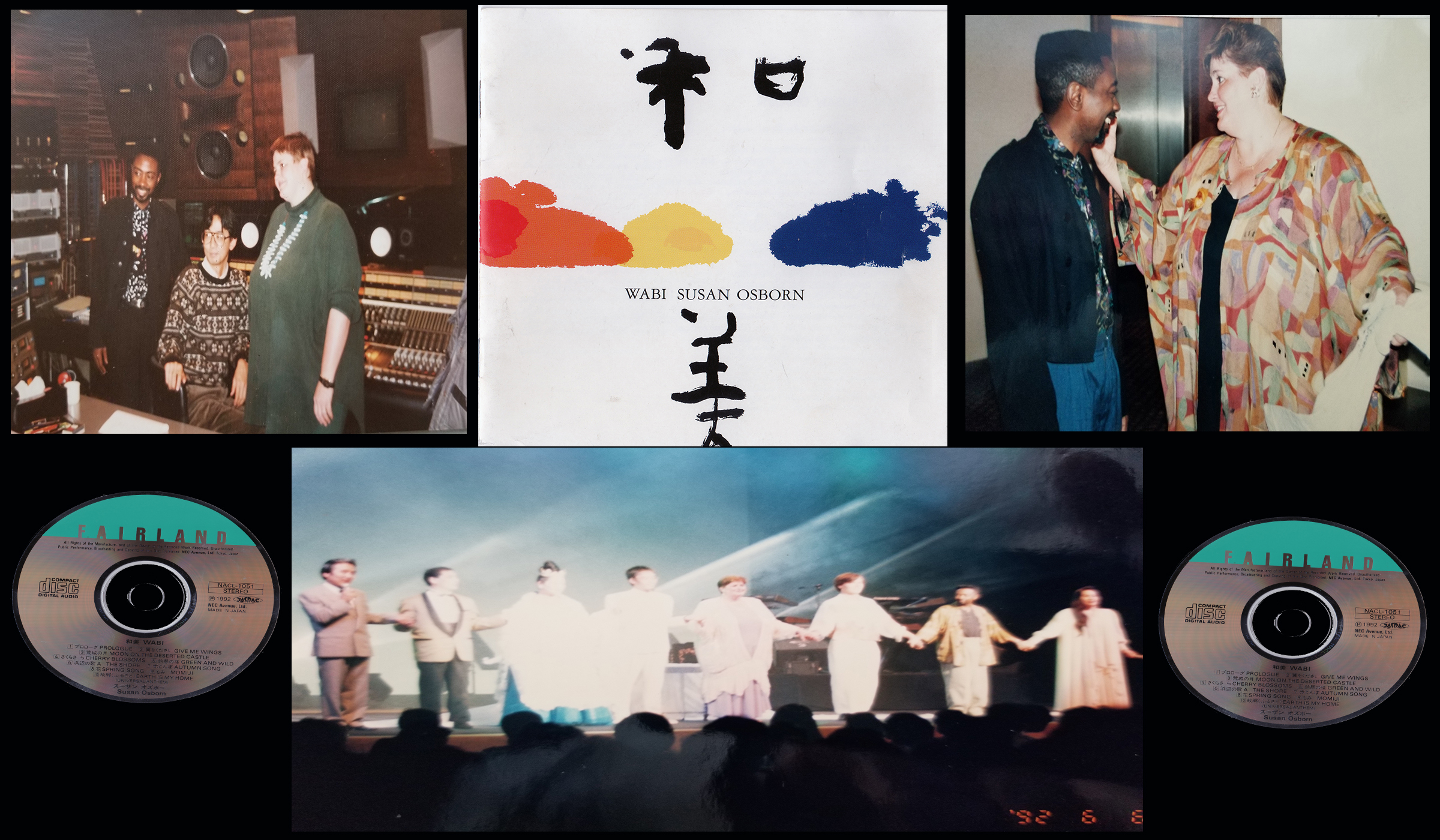
Robert Irving III’s production of “Wabi” for singer, Susan Osborne garnered the Nippon (Japan) Record Award for Best Creative Concept in 1993. The album consisted of Japanese folk songs of which Irving was given license by Executive Producer, Masato Ushijima, to re-harmonize and extend the form of these traditional songs. Likewise, Osborne created English lyrics that mostly mirrored the original meaning. The melodies were familiar to the Japanese public yet, heard within a completely new context. This led to a year of touring in Japan including large venues and television.
Irving also composed the score for George Tillman, Jr.’s (Soul Food/Barber Shop) 1995 feature film, “Scenes for the Soul” and composed “Mademoiselle Mandarin, a Concerto for Harp and Orchestra,” featuring Swiss harpist, Markus Klinko with the Miami Chamber Symphony later that year. In preparation for this project Irving studied advance orchestration with Dr. Robert Lombardo at Roosevelt University and Harp with master harpist, Orlando Murden.
In 1994 Irving formed the Miles Davis alumni band ESP, which recorded one CD for Pioneer Records in Japan and toured Europe several times. This group featured Bobby Broom on guitar, Darryl Jones on bass while rotating saxophonists, Bill Evans, David McMurray and Kirk Whalum. A later version of the group, ESP II, included Weather Report bassist, Victor Bailey, and saxophonist David McMurray (Was Not Was) along with Miles Davis alums, Mino Cinelu on percussion, Randy Hall guitar and vocals, and Adam Holzman keyboards Ricky Wellman on drums.
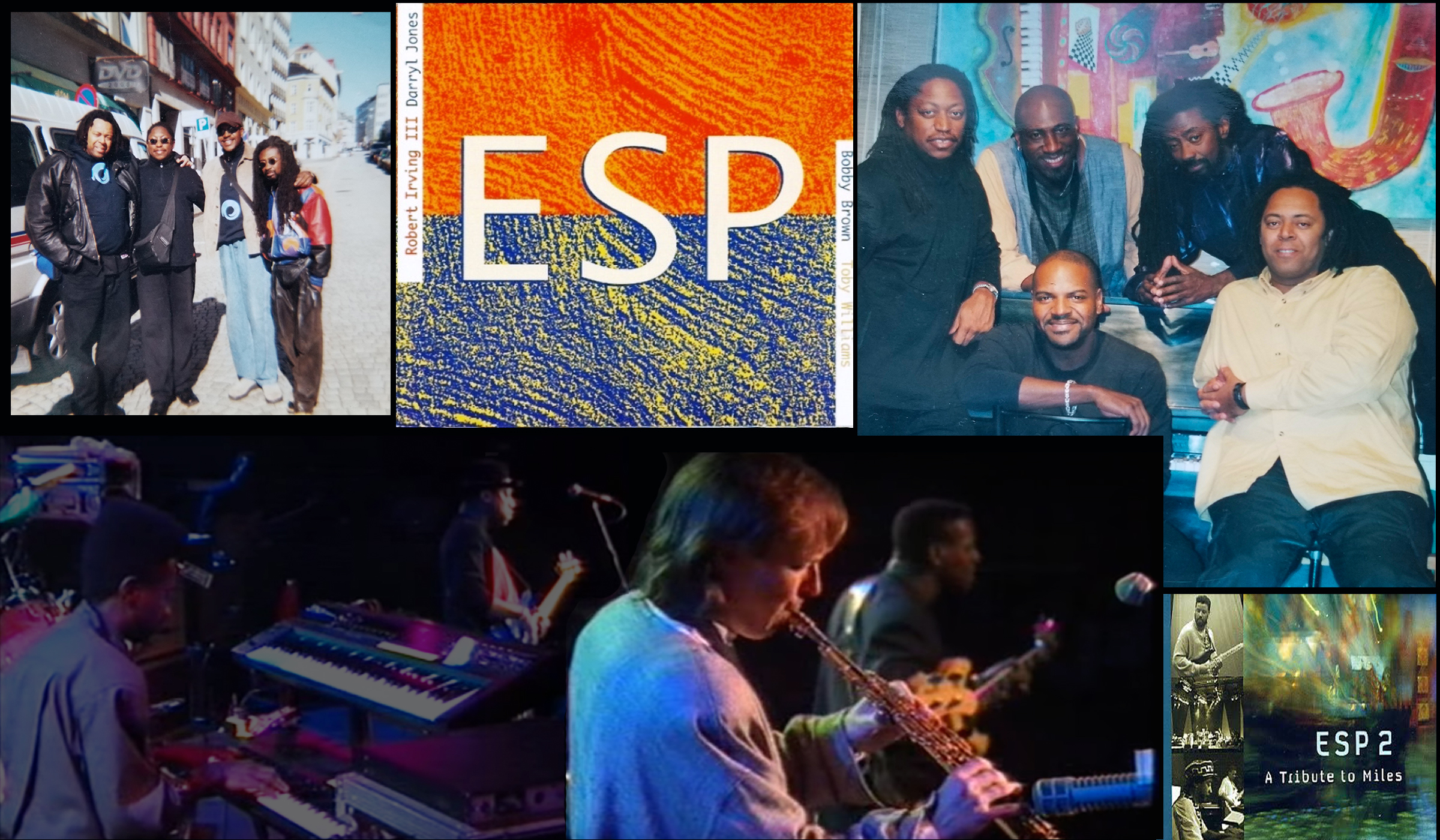
From 1997 until 2000, The Band School Of Cool became Irving’s Chicago based experimental group for development of electronic music. The repertoire spanned from funk-rock-jazz fusion arrangements of standards like, “Donna Lee” and “Blue N’ Green” along with Irving’s original material composed for the band. The group personnel included Walter Henderson on trumpet and flugel-horn, Sarah Underwood on tenor sax and flute, Bob Davis on guitar, Michael Manson on bass and various drummers including Clyde Davis, and Anthony Pinciatti. Trumpeter/pianist, Gregory Bibb, Irving’s high school buddy in Chicago had suggested the name for the band and Irving loved it. This band gave Irving’s daughter Sharon her first professional performance experience as a teenager with a performance at the Shedd Aquarium in about 2000. This may have been the group’s final performance. Notably, Micheal Manson went on to tour with George Duke and Larry Carlton, Anthony Pinciattia moved to New York to play with a long list of jazz luminaries including James Moody, Dr. Lonnie Smith, John Abercrombie, and Benny Golson. Sarah Underwood, also a consummate actress, won the Los Angeles Woman’s Theater Award and relocated to teach theater at UCLA.
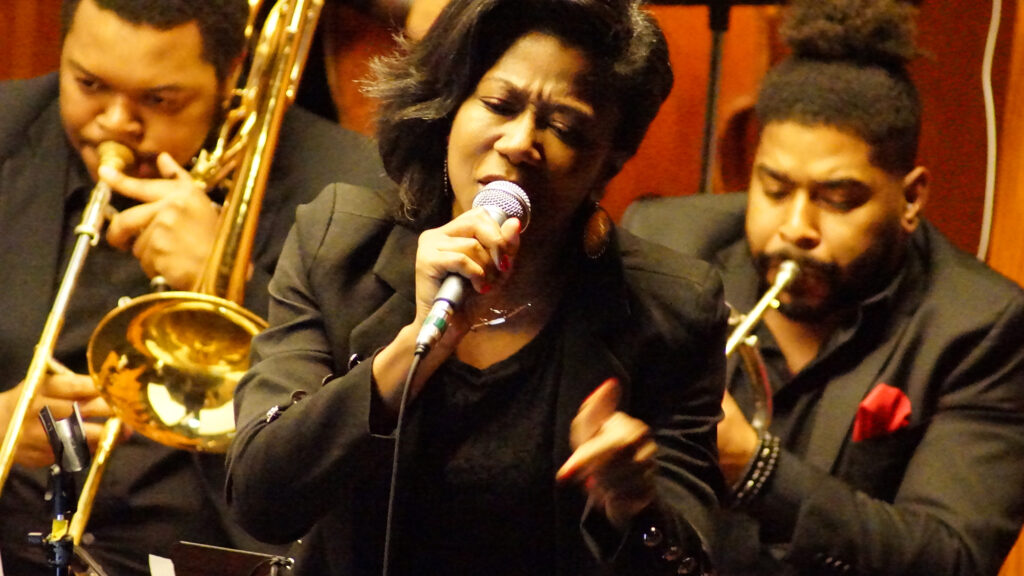
After college, Sharon Irving found her niche as a professional worship leader in the mega-church arena, being in high demand for her prowess as a spoken word artist/vocalist. She recently rose to the semi-finals on the 10th season of the NBC television show, America’s Got Talent, receiving the prestigious “golden buzzer” by former Spice Girl, Mel B. She recently performed with the Sonic Portraits Orchestra as her dad conducted.
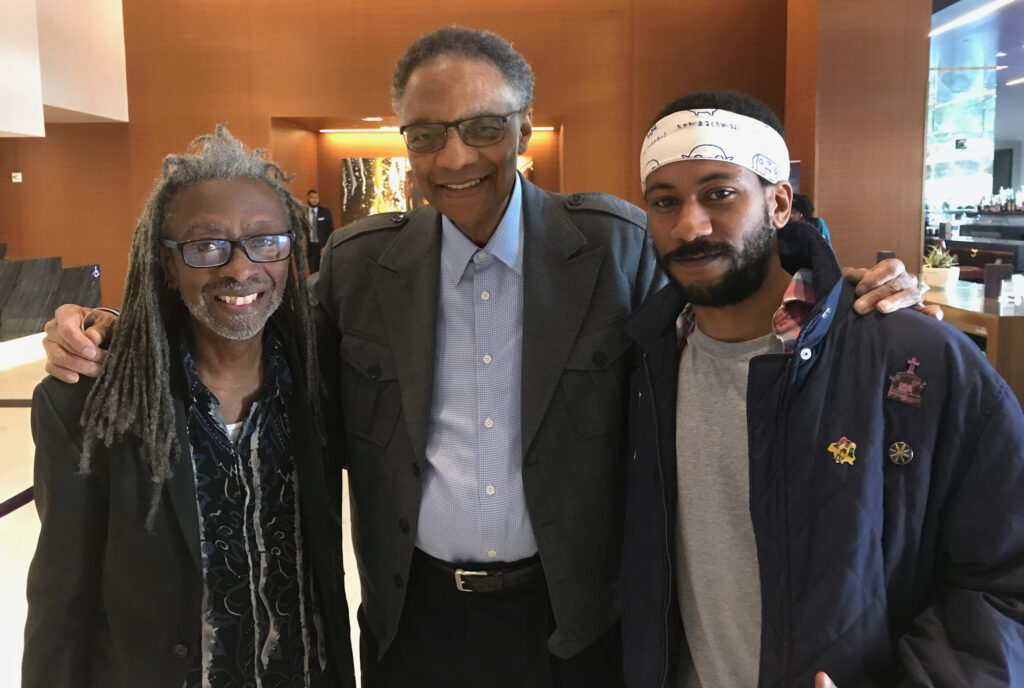
Also around this time Irving started painting (1997) and credits his son Jeremy with giving him the inspiration and confidence to explore visual arts. Jeremy showed evidence of being an art prodigy at 7-years of age and subsequently received scholarships to attend an art High School and two prominent art colleges. Miles had previous encouraged Robert Irving III to try painting, explain to him, “Music is a painting you can hear and a painting is music you can see.” At that time (about 1987) Irving had no interest or known talent. Irving says, “After observing the natural talent of Jeremy, I thought: maybe it’s somewhere in his genes, which would mean its in my genetics.” Jeremy soon got the music bug as well, playing piano, guitar and drums, spoken word and vocals. He is now an internationally acclaimed Electronic Music artist under the name Jeremiah Jae mentored by Flying Lotus (the nephew of John and Alice Coltrane). His work has been praised by the New York Times and NPR.
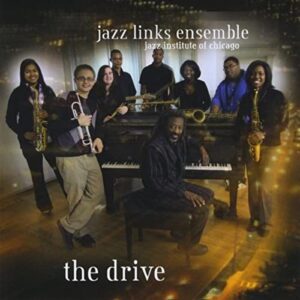
Irving’s continued expansion into the new millennium found him with a new focus: As a benefactor of early childhood music education and mentoring by master musicians, Irving became a strong proponent of the same for youth of his day. He began as a substitute music teacher at Lake Forest High School which eventually hired him to teach private lessons for classical pianists who were transitioning to jazz. In 2004 he co-founded Eternal Sound Family with Kelan Phil Cohran to provide free music lessons for kids on the south-side of Chicago. In 2006 he began work as a professional mentor with the Jazz Institute of Chicago’s Jazz Links Program for young students of jazz. Later, in 2010-2011 Irving produced a CD for the program while exposing students to music publishing, licensing, marketing and promotion along with the creative and technical aspects of record production. He later served as Director of Jazz and World Music at Chicago Academy of Music Conservatory and continues to conducted music workshops and master’s classes for both students and teachers.
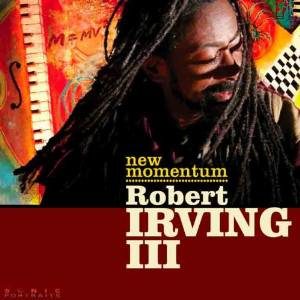
Irving Co-founded Sonic Portraits Entertainment label in 2007 leading to the release of “New Momentum” as his first acoustic project as a leader. The CD was co-produced by label co-founder, Terri Lyne Carrington. The CD captured a Billboard Magazine “critics’ choice” (highly recommended for musical merit):
“Conspicuously absent as a leader since serving as Miles Davis’ fusion-oriented musical director in the ‘80s, Robert Irving III returns in dramatic fashion on “New Momentum,” the premiere release for indie Sonic Portraits. What’s so remarkable about Irving’s return from obscurity is the fresh, vital sound, spurred by his pianistic dynamism, and infused with an imaginative improvisational approach that encompasses dancing tempo shifts and harmonic curves…” – April 7, 2007 (by Dan Ouellette):
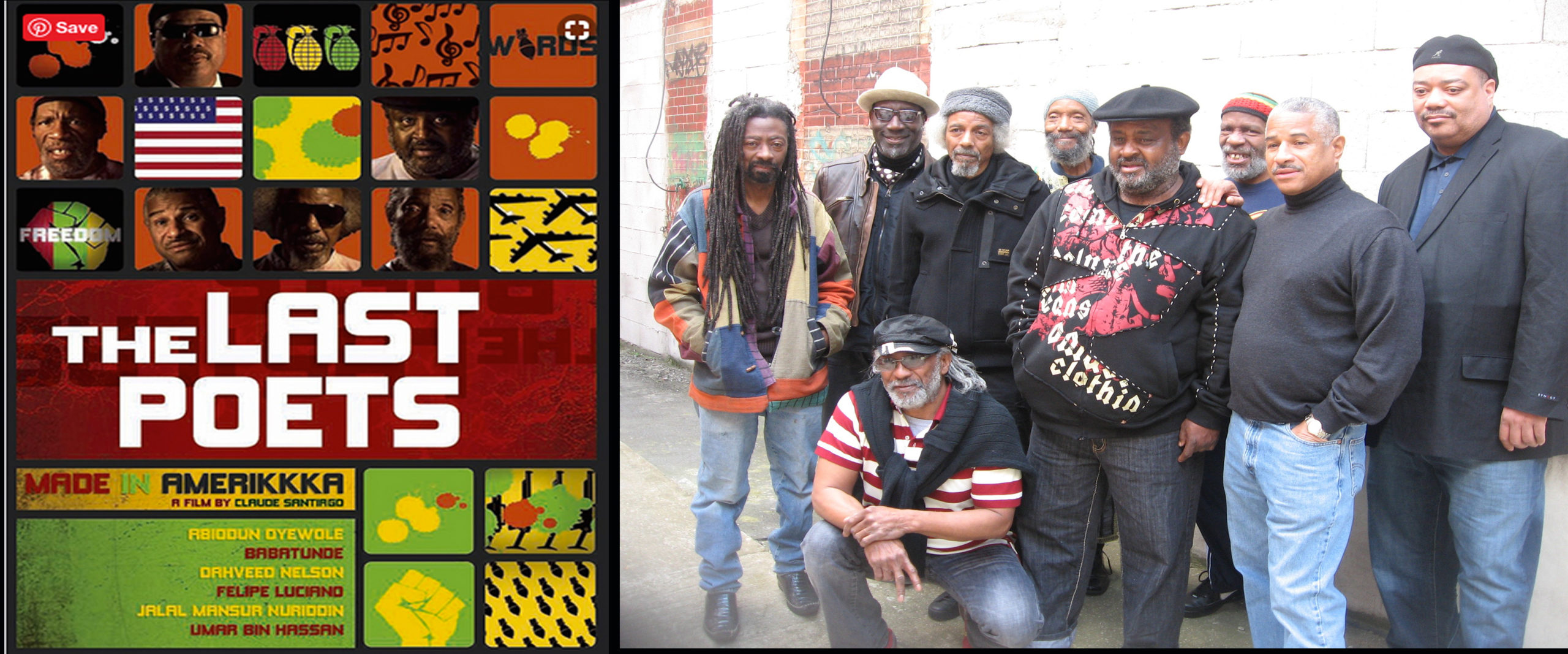
In 2008 saxophonist David Murray summoned Robert Irving III to be a part of the Historic 40th-Anniversary of the legendary Last Poets in France. The all-star rhythm section included Jamaaladeen Tacoma on bass, Ronald Shannon Jackson on drums and Baba Donn Babatunde on percussionist. All but one member of the original groups participated. The highly intense rehearsals and performance were video taped and released as a documentary film on DVD.

In 2009, Robert Irving III received a commission from the Jazz Institute in cooperation with the City of Chicago Department of Cultural Affairs. This culminated with Irving’s creation and debut of “Sketches of Brazil” with his “Sonic Portraits Orchestra” in the world premiere before a record Millennium Park crowd of 12,500 fans while receiving several standing ovations. The piece, his orchestral homage to mentors, Miles Davis and Gil Evans on the 50th anniversary of the recording of the pair’s classic, “Sketches of Spain,” premiered on the Jay Pritzker Pavilion stage on Thursday, August 13, 2009.
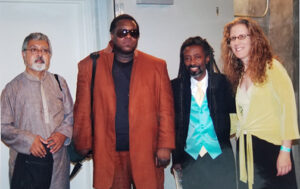
It featured trumpeter Wallace Roney as the principal soloist, and classical guitarist Fareed Haque as special guest. Brazilian percussionists Dede Sampaio and Felipe Fraga drove the traditional rhythms with drummer Charles “Rick” Heath (Irving’s cousin). Miles Evans the son of Gil Evans played trumpet in the orchestra. Irving ensemble consisted of 33-classical and jazz musicians whom he conducted, at times, from the piano. The Jazz Institute of Chicago sponsored a Symposium prior to the event with special guests from the families of Miles Davis and Gil Evans. Chicago Tribune Critic Howard Reich said of Irving’s work, “Extraordinarily ambitious… a tour de force of orchestral writing.” The recording has never but released due to technical and union issues.

“Our Space In Time” released in 2014 under the name “Robert Irving III Generations” is his third commercially released studio album, featuring young musicians whom Irving mentored (two from the JIC). The personnel are (back row left to right) Rajiv Halim flute/soprano sax, Emma Dayhuff bass, Irvin Pierce tenor sax, Charles ‘Rick” Heath IV drums, Lolo Irving alto sax, Robert Irving III and guitarist Scott Hesse. The CD entered the CMJ Chart at #30 and rose to 63 on the top 100 Jazz Week Chart, consists of 10-original compositions by Robert Irving III, four of which came to him in dreams:
Chicago Tribune CD Review 9/2/15 Robert Irving III Generations “Our Space in Time”
“Robert Irving III explores radically different musical terrain in “Our Space in Time” (Sonic Portraits Jazz), his tenure as music director for Miles Davis from 1979 to 1988 reflected in the open-eared, open-minded, forward-looking nature of this venture. A heady, trippy foray into sonic experimentation, the album merges acoustic and electric instrumentation, avant-garde and pop-tinged idioms, splashes of color, hypnotic riffs, ethereal vocals and a great deal more….By turns gnarly and tuneful, rambunctious and meditative, “Our Space in Time” extends to septet the ebullient spirit that listeners associate with Irving’s pianism… Part of the anything-goes nature of the venture surely owes to the multigenerational staffing of Irving’s band, aptly titled Generations. In effect, if Irving once was the up-and-coming player following trumpet icon Davis’ lead, now the pianist serves as the mentor, drawing as much energy and inspiration from his proteges as Davis surely did from him.” Howard Reich
DownBeat Magazine Review- February 2016
“Our Space In Time addresses such themes as the links between artist past and present, the balance of legacy and innovation, the significance of our current moment and the process of moving ahead… As a member of Miles Davis’ 1981 comeback band and later Davis’ music director, Irving rode a post-fusion wave when it was being supplanted by the Marsalis-led revival of hard-bop. Here he resurrects an alternative strategy that Wayne Shorter proposed in albums like Atlantis and High Life: tightly knit, complex charts for small ensembles that are flexible enough to couch striking personal statements but catchy enough to comfort audiences with an identifiable thread.— Howard Mandel – President International Jazz Journalists Association
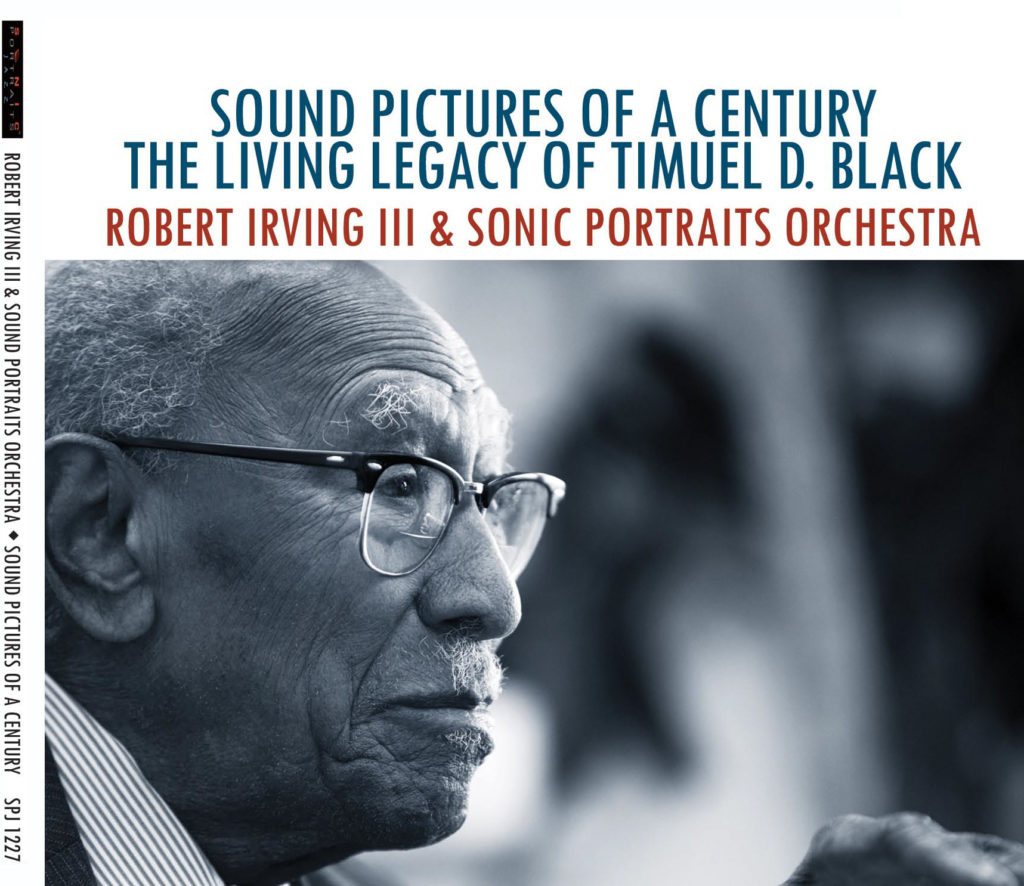
More Recent Activity
Robert Irving III has recently been commissioned to compose an orchestral suite in commemoration of the 100th birthday of Chicago Educator/Activist, Timuel D. Black. The suite entitled, Sound Pictures of a Century the Living Legacy of Timuel D. Black mirrors the honoree’s love of jazz, classical and gospel music. Irving’s Sonic Portraits Orchestra premiered this piece on December 8, 2018 with many Chicago jazz luminaries being featured including saxophonist Ari Brown vocalists, Dee Alexander and Maggie Brown (daughter of the legendary Oscar Brown Jr.). Irving’s brother, vocalist, trumpeter, Micheal D. Irving reunited with his elder sibling for the first time in years to partake in the performance of this complex piece.
Composer, Robert Irving III, commissioned to create this commemorative work in 2018, began by interviewing the centenarian Timuel D. Black while additionally researching online content including speeches, panel discussions, documentaries and other interviews. Irving culled quotes, phrases and stories that convey and highlighted the empirical arc of Black’s 100-years. Irving crafted the actual words and stories of Timuel into “song cycles” which transverse classical, jazz, blues and gospel: expressly the music Black has loved from an early age as his mother took him to weekly symphony performances and his father to jazz concerts including a Louis Armstrong set. Through Irving’s interpretations, Black, becomes a virtual and literal co-song writer of five songs from this suite. The limited edition CD was given away as part of a gift package to 500 attendees that included numerous dignitaries such as The Reverend Jessie Jackson, then Chicago Mayor, Rham Emanuel and several state level government officials. The CD has not been released commercially yet.
Irving’s most recent large ensemble performance featured a retake of the Timuel D. Black commissioned composition with the Sonic Portraits Orchestra (Youth Division) featuring Young Diva Young Divo, a collective of the region’s top young vocalists curated by Senabella Gill (aka the Bronzeville Diva) on October 27, 2019 at Shultz Auditorium on the campus of Illinois Institute of Technology (that just happened to be Irving’s birthday). The guest pianist with this youth orchestra, Joshua Mhoon is a classical music prodigy mentored by Irving.
by Sonic Portraits Orchestra Youth Division/ Young Diva Young Divo Live at IIT

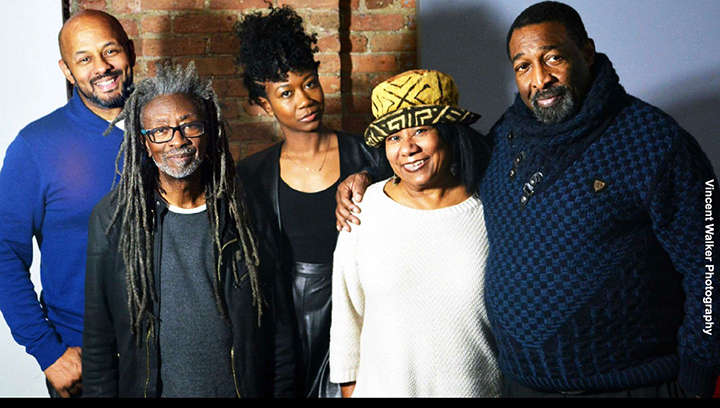
The Sonic Portraits Orchestra is yet an active part of Irving’s current work as a staff record producer for the North Carolina based Omnific Music and also for the Chicago based, NeoGospel Music Group founded by social scientist, Dwight McKee. These projects fuse soul, gospel, jazz and classical music elements. The current NeoGospel EP entitled, Existential Vol. 1 is by the performing artist group collective, Ephiffony. This group features various artists including, Wanda Hutchinson Wayne of the Emotions, and Irving’s daughter, Sharon Irving on the hit single Time For Change (In Time) of which Irving also directed and edited the video under the auspices of his Ri3 Reels film enterprise (approaching 50,000 YouTube views to date). The co-lead vocalist with Sharon is Ramel Werner.

As the founder of the re-branded Sonic Portraits Jazz label, The label has released two albums by Lady Smith Black Mambazo bassist, Frank Russell and recently a live album by singer/songwriter, actress, Laura Walls entitled, Olori Live at the North Sea Jazz Festival. and a 2019 holiday single, Season of Lights penned by Irving and Walls featuring an all-star cast including Robert Irving III-piano, Terri Lyne Carrington-drums, James Cammack-bass, Wallace Roney-trumpet, Leon Q, Allen-trumpet. James Perkins Jr.-tenor sax, Norman Palm Jr. -trombone and
Nathelie Joachim-piccolo.
Irving notes that the label plans to re-issue 10-various albums that have never been digitally released and plans to remix and/or remaster these for reissue on the label. This will include Irving’s debut Midnight Dream (remixed and remastered), an African Arts Ensemble commission and Morning Sunlight on which Irving sings (released only in Japan during a month long tour in 1995). New releases are also being planed including a third release by Laura Walls: a full length album entitled, “Free As A Child”, a project by vocalist Senabella Gill (aka the Bronzeville Diva) entitled, “If You Ask Me To” consisting of classic pop tunes with Irving’s extensive jazz treatments and a remixed/remaster of the album entitled, “Reprise” by Chris Murrell, 15-year Count Basie Orchestra vocalist.
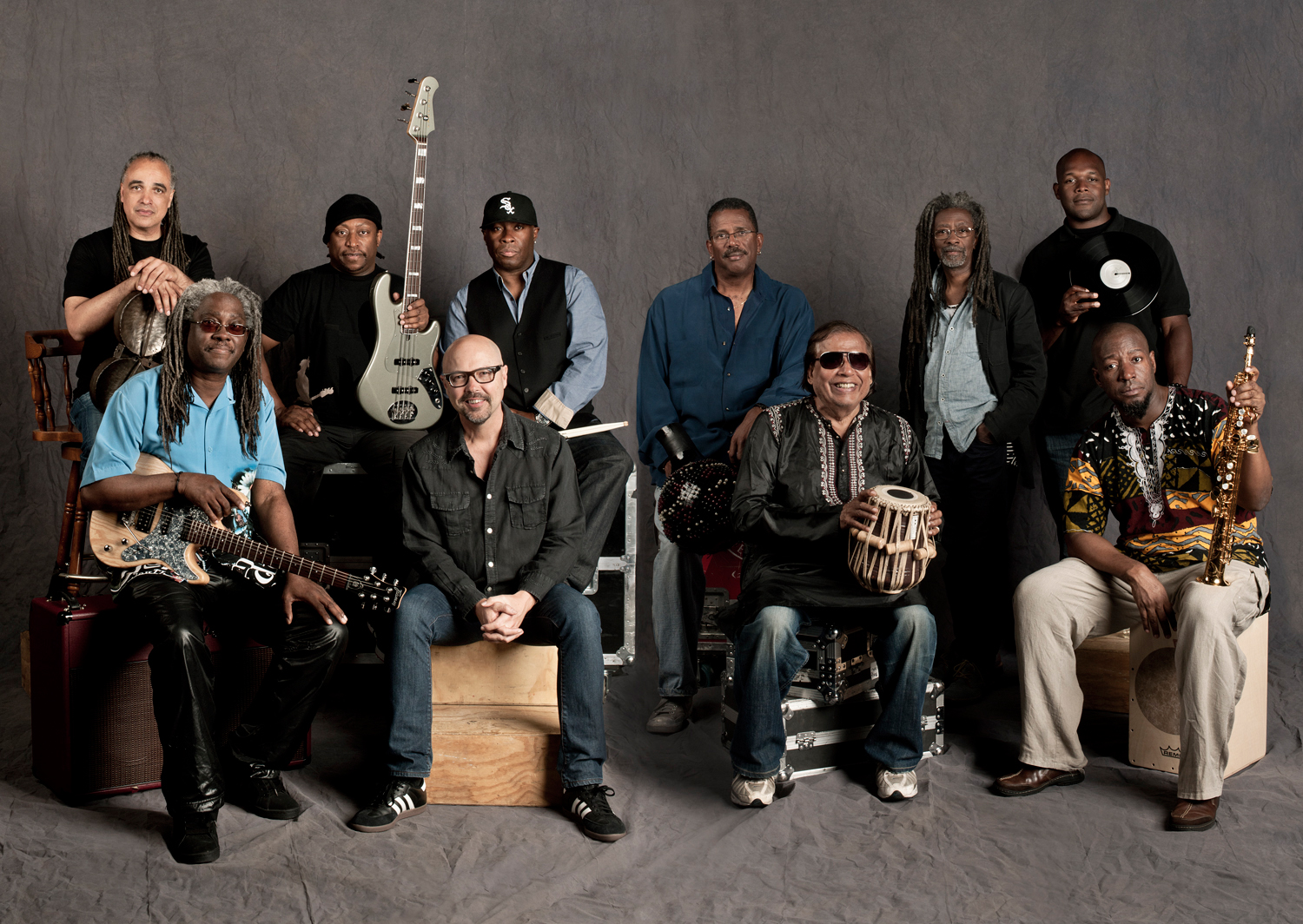 Robert Irving III is the musical director of the Miles Electric Band, which consists of several Miles Davis alumni with the trumpet chair being shared by numerous young jazz lions including Etienne Charles, Christian Scott, Keyon Harrold and seasoned veterans that include Jeremy Pelt, Nicholas Payton and Terrance Blanchard. Irving states, “This band does not pay tribute to Miles, it extends his legacy.”
Robert Irving III is the musical director of the Miles Electric Band, which consists of several Miles Davis alumni with the trumpet chair being shared by numerous young jazz lions including Etienne Charles, Christian Scott, Keyon Harrold and seasoned veterans that include Jeremy Pelt, Nicholas Payton and Terrance Blanchard. Irving states, “This band does not pay tribute to Miles, it extends his legacy.”

Excerpts from the Robert Irving III memoir, entitled, “Harmonic Possibilities- (The Sound of Freedom)” were published by New York University’s Institute of African-American Affairs publication Black Renaissance Noire Magazine in the Fall 2013 issue. The full memoir is still being completed. You can learn more about the memoir HERE.
Favorite Quotes:
“Music is a painting that you can hear and a painting is music you can see.” —Miles Davis
“Genius just means I work 100 times harder and longer than everyone else”— Ri3
“Creativity doesn’t come from me, it comes through me” —-Ri3